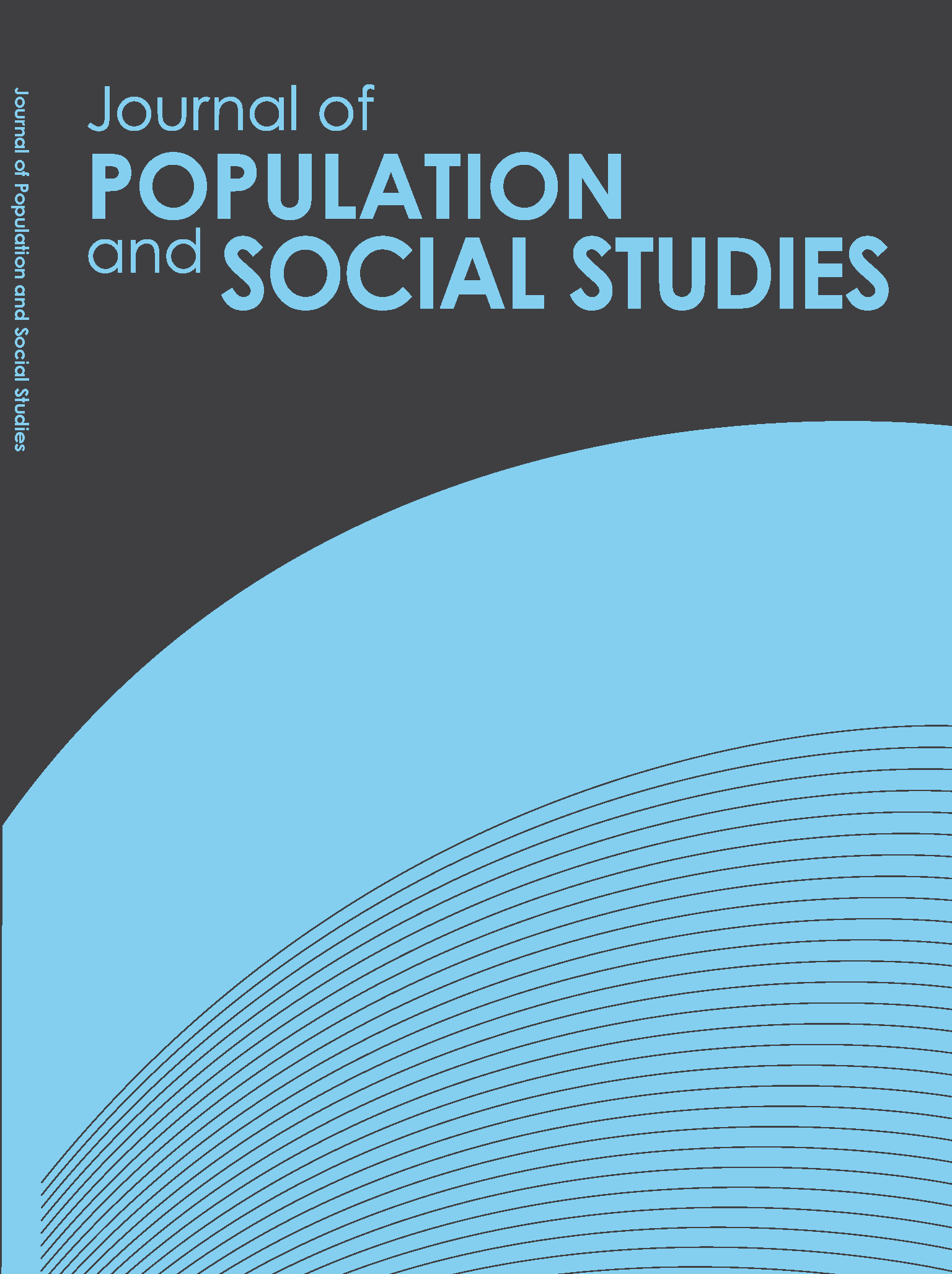Marriage in Kanchanaburi Province, Thailand: Who Delays, Who Does Not?
Main Article Content
Abstract
Delayed marriage is a global phenomenon, but in Thailand studies addressing this issue are limited. This study aims to analyze the factors associated with delayed marriage among Thai men and women in Kanchanaburi province. The analysis is based on a sample of 1,370 men and women aged 18-59 found in the Survey of Family and Household, 2010. Chi-squared analysis reveals women are more sensitive to ‘modernization variables’ - education, occupation, economic status, migration experience, residential area, and attitudes towards marriage and divorce. This is confirmed by results of the logit model analysis which reveals that only age, occupation, and attitudes towards marriage have a weak-moderate effect on delayed marriage among men, whereas among women, all variables were found to be significant, with the exception of occupation. This result supports the idea that delayed marriage, particularly among women, is sensitive to modernization. It suggests that with continuing development more men and women could delay marriage. Delayed marriage could be an opportunity for more investment in human resource development aimed at preparing young adults for the family life.
Article Details
References
Becker, G.S. (1973). A theory of marriage: Part I. The Journal of Political Economy, 81(4), 813-846.
Caldwell, J.C., Gajanayake, I., Caldwell, B. & Caldwell, P. (1989). Is marriage delay a multiphasic response to pressure for fertility decline? The case of Sri Lanka. Journal of Marriage and Family, 51(2), 337-351.
Chamratrithirong, A. (1984). Loosely-structured Thailand: The evidence from marriage culture. In A. Chamratrithirong (Ed.), Perspectives on the Thai marriage. Nakhon Pathom, Thailand: Institute for Population and Social Research, Mahidol University.
Dixon, R.B. (1971). Explaining cross-cultural variation in age at marriage and proportion never marrying. Population Studies, 25(2), 215-228.
Gallagher, M. (2002). What is marriage for? The public purposes of marriage law. Louisiana Law Review, 62(3), 773-775.
Goode, W. (1963). World revolution and family patterns. New York: Free Press.
Goode, W. (1968). Industrialization and family structure. In Bell Norman (Ed.), A modern introduction to the family (pp. 113-120). New York: Free Press.
Guest, P. & Tan, J. E. (1994). Transformation of marriage patterns in Thailand (IPSR Publication No. 176). Nakhon Pathom, Thailand: Institute for Population and Social Research, Mahidol University.
Hajnal, J. (1965). European marriage patterns in perspective. In D.V. Glass & D.E.C. Eversley (Eds.), Population in history: Essays in historical demography (pp. 101-143). London: Edward Arnold.
Hirschman, C. (1985). Premarital socio-economic roles and the timing of family formation: A comparative study of five Asian societies. Demography, 22(1), 35-59.
Jones, G.W. (2004). Not “when to marry” but “whether to marry”: The changing context of marriage decision in East and Southeast Asia. In G. W. Jones & K. Rmadas (Eds.), (Un)tying the knot: Ideal
and reality in Asian marriage (pp. 3-56). Singapore: Asia Research Institute, National University of Singapore.
Juntarodjana, J. (2002). Family background and the transition to adulthood: Experience from Thailand and Hong Kong. (Unpublished doctoral dissertation). Faculty of Graduate Studies, Mahidol University.
Juntarodjana, J. & Podhisita, C. (2003). Transition from school to work: Experience of Thai and Hong Kong Youth. Journal of Population and Social Studies, 11(2), 71-94.
National Economic and Social Development Board. (2017). Gross regional and provincial product chain volume measures time series data, 1995-2015. Retrieved from http://www.nesdb.go.th/ewt_dl_link.php?nid=5628&filename=gross_regional
National Statistical Office. (n.d.). The 1990 population and housing census, Whole Kingdom. Bangkok: National Statistical Office.
National Statistical Office. (n.d.). The 2010 population and housing census, Kanchanaburi. Bangkok: National Statistical Office.
National Statistical Office. (n.d.). The 2010 population and housing census, Whole Kingdom. Bangkok: National Statistical Office.
Peng, T. N. (2007). Trends in delayed and non-marriage in Peninsular Malaysia. Asian Population Studies, 3(3), 243-261.
Podhisita, C., Varangrat, A., Gray, R., Vapattanawong, P., & Chuanwan, S. (2009). การเปลี่ยนแปลงภาวะสมรสในประเทศไทย พ.ศ. 2503-2543: นัยต่อภาวะเจริญพันธุ์ในอนาคต [Nuptiality change in Thailand, 1960-2000: Implication for future fertility]. Songklanakarin Journal of Social Sciences and Humanities, 15(5), 703-722.
Retherford, R. D., Ogawa, N., & Matsukura, R. (2001). Late marraige and less marraige in Japan. Population and Development Review, 27(1), 65-101.
Smith, P.C. (1980). Asian marriage patterns in Transition. Journal of Family History, 5(1), 58-96.
Thornton, A. (2001). The developmental paradigm, reading history sideways, and family change. Demography, 38(4), 449-465.
United Nations, Department of Economic and Social Affairs,
Population Division. (2013). World Fertility Report 2012. (United Nations publication).


